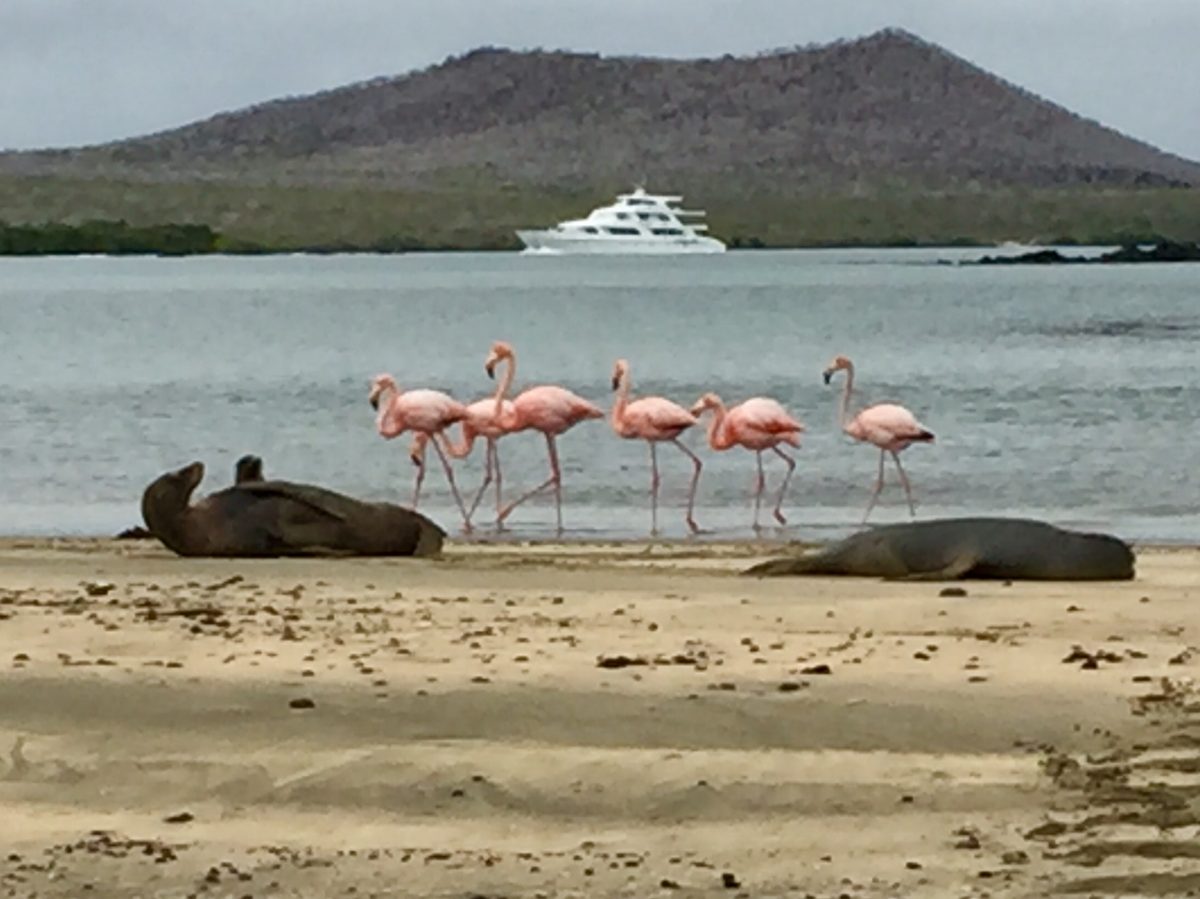Nov 10 2019
By Siri
500 million years ago near the equator, on the edge of the Nazca plate, a hot spot in the earth crust erupted over and over to create at least 13 main islands, 6 smaller ones and about 225 islets to become known as the Galapagos. These islands are 670ish miles from the mainland of Ecuador and located right where the south east and north east trade winds blow and three marine currents meet; the panama current, the Peru coastal current and the deep equatorial counter current
Slowly over hundreds of thousands of years a strange collection of inhabitants made the islands home. There were plant seeds and birds that blew in on the trade winds. Many sea turtles and fishes came on the currents as far as from Southeast Asia by following the equatorial counter current. Mangrove seeds, and rafts of jungle plants floated across from Central and South America. On some of them were iguanas that could survive without food or water of months, also big tortoises that could float on water and not eat or drink for many months. Mammals only came if they were sea mammals like fur sea lions. They all changed to fit their particular island world. The land creatures did not have natural predators mostly and did not learn to protect their nests. It wasn’t until after millions of years of evolution, after humans evolved and began sailing the world as explorers and pirates that land mammals came to the islands. The sailors brought rats, goats, and cats. These goats ate the food that the giant tortoises needed. The rats and cats ate tortoise, turtle and iguana eggs and birds’ eggs and the baby animals too.
The people that came to settle in the Galapagos had to be tough too and try to create a life that did not hurt the environment too much if it was going to work for them. I am not talking about those people that stopped by there over the past 500 years to take tons of tortoises, kill many tons of whales for oil and still now sharks for fins.
One of those tough families was the Wittmer family. The Wittmers moved away from Germany in 1933 for a more peaceful life and healthy place for their blind son to grow up. Margaret Wittmer was pregnant when they arrived. They went to the almost uninhabited Floreana island. They first made a shelter in a cave that pirates had used until they could build something more like a half-cave half-house of rocks and logs they found. This is where their son, Rolf, was born. This family made a farm that they could live from. They got food stuff from a ship that came by 4 times a year. This family still lives on Floreana island. In fact Rolf started as a fisherman and then built boats to show tourists the islands. We took a tour for 8 days on one of his company’s boats. It was way more luxurious then a pirate cave or raft of jungle plants😊 Thank you to our amazing naturalist guide, Nancy, who taught me these things
